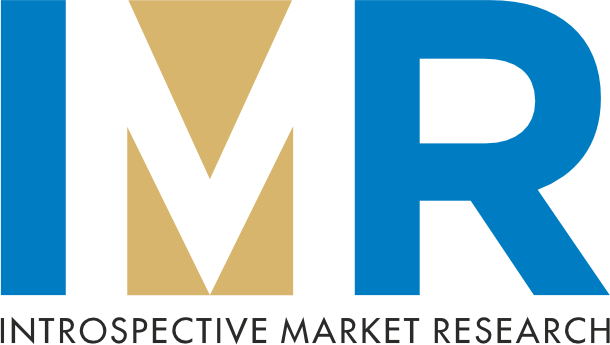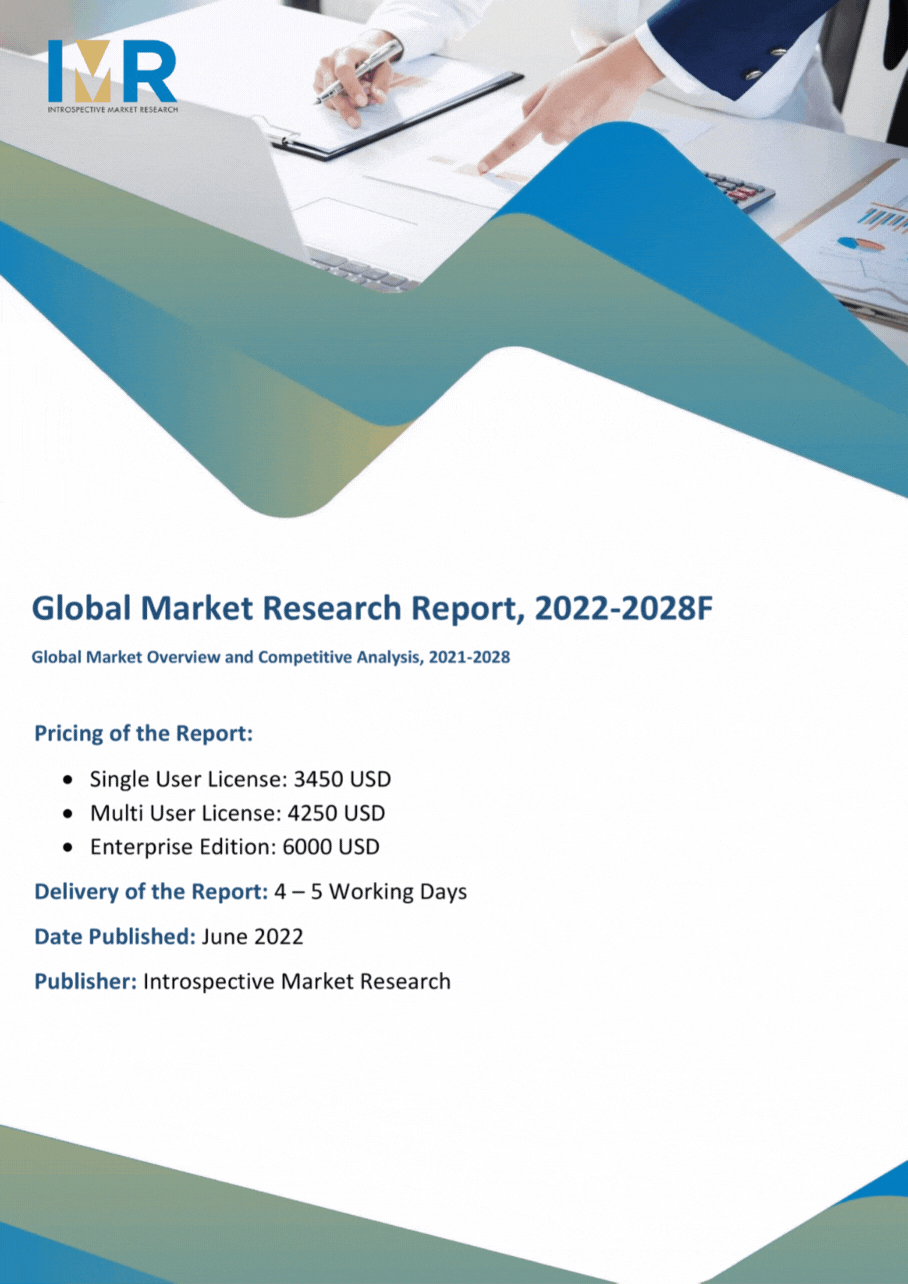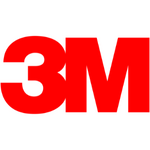Artificial Meat Products Market Synopsis
Artificial Meat Products Market Size Was Valued at USD 4.38 Billion in 2023, and is Projected to Reach USD 6.41 Billion by 2032, Growing at a CAGR of 4.32% From 2024-2032.
Artificial meat products, also known as alternative or cultured meat, are food products that replicate the taste, texture, and nutritional profile of conventional meat but are produced using alternative methods such as plant-based ingredients or laboratory cultivation of animal cells. These products aim to offer a more sustainable and ethical alternative to traditional meat production while addressing concerns related to animal welfare, environmental impact, and food security.
- Artificial meat products, including plant-based alternatives and cultured meat, have various applications across various industries. They are used in consumer food products like burgers, sausages, and deli slices, as well as in food manufacturing for soups, sauces, and ready meals. They are also used in the food service sector by restaurants, fast-food chains, and catering companies to offer meatless options. Artificial meat products are marketed as healthier alternatives due to their lower saturated fat and cholesterol levels, providing protein for vegetarians, vegans, and those seeking to reduce meat consumption.
- They are also promoted as more sustainable due to their lower carbon footprint, fewer natural resources, and less greenhouse gas emissions. Cultured meat offers a cruelty-free alternative to traditional meat production, addressing concerns about animal welfare. Research and development efforts are ongoing to improve taste, texture, nutritional profile, and production efficiency. Additionally, cultured meat has been proposed as a potential food source for space missions.
- Artificial meat products, also known as plant-based or cultured meat, are in high demand due to their environmental sustainability, animal welfare concerns, health benefits, and food security. Traditional meat production is resource-intensive and contributes to greenhouse gas emissions, deforestation, and water pollution. Artificial meat products offer a cruelty-free alternative, as they don't require animal slaughter.
- They are also perceived as healthier due to their lower saturated fat and cholesterol content. artificial meat products offer a more efficient and scalable method of meat production. Advances in food technology have led to the development of artificial meat products that closely resemble conventional meat, attracting consumers who may have been skeptical. As more people adopt vegetarian, vegan, or flexitarian diets, artificial meat products provide options that align with their dietary preferences without sacrificing taste or nutrition.

Artificial Meat Products Market Trend Analysis
Healthier alternatives to conventional meat
- The growth of artificial meat products is driven by the demand for healthier alternatives to conventional meat. Health-conscious consumers are increasingly seeking meat alternatives with lower levels of saturated fat, cholesterol, and other harmful components. Artificial meat products, particularly plant-based options, often contain healthier ingredients like vegetables, grains, and legumes, rich in fiber, vitamins, and minerals. Consumption of red and processed meats has been linked to an increased risk of chronic diseases, making artificial meat products a viable alternative for those looking to reduce their intake of conventional meat while still enjoying familiar dishes.
- Customizable nutrition profiles are another advantage of artificial meat products. Manufacturers can adjust ingredients and formulations to meet specific dietary preferences, such as low sodium, low fat, gluten-free, or allergen-free options. Functional ingredients, such as omega-3 fatty acids, antioxidants, and plant-based proteins, are often used in artificial meat products to offer additional health benefits, such as anti-inflammatory effects and improved gut health.
- Artificial meat products often align with consumers' concerns about environmental sustainability and animal welfare. By reducing reliance on conventional meat production, which is associated with land degradation, greenhouse gas emissions, and animal cruelty, artificial meat products offer a more ethical and sustainable food choice, appealing to health-conscious consumers who prioritize environmental and ethical considerations.
Restraint
Regulatory approval is a complex process
- Artificial meat products face significant challenges in regulatory approval processes due to their novelty, safety concerns, and labeling requirements. Existing regulations may not fully cover all aspects of their production, safety, and labeling, necessitating the development of new guidelines or adaptations.
- Safety assessments are crucial to evaluate factors like microbial contamination, allergenicity, and health risks associated with novel ingredients or production methods. Clear and accurate labeling is essential to inform consumers about the nature and composition of artificial meat products. Ethical and environmental considerations may also be considered when evaluating artificial meat products.
- International harmonization of regulations can streamline the approval process and facilitate market access. Public perception and acceptance of artificial meat products are also considered when evaluating their safety and suitability for consumption. Addressing consumer concerns and building trust in the safety and benefits of these products is essential for regulatory approval.
Opportunity
Ethical and Animal Welfare Concerns
- Artificial meat products offer a significant opportunity to address ethical and animal welfare concerns. They provide a cruelty-free alternative to traditional meat production, eliminating the need for animal slaughter and overcrowding. This reduces the demand for intensive farming practices, improving animal welfare and minimizing suffering.
- Artificial meat production also offers environmental benefits, as conventional meat production contributes to deforestation, greenhouse gas emissions, water pollution, and biodiversity loss. As consumer preferences shift towards sustainable and ethical food choices, artificial meat products align dietary preferences with values.
- The growing demand for plant-based and cultured meat products reflects a growing market opportunity in response to ethical and animal welfare concerns. Companies investing in artificial meat technologies can capitalize on this trend by offering innovative and ethical alternatives to conventional meat products.
Challenge
Scale-up and Production Efficiency
- Artificial meat production faces several challenges, including reducing costs, maintaining cell culture technology, sourcing large quantities of plant proteins and ingredients, finding sustainable energy and resource usage, navigating complex regulatory frameworks, and meeting consumer acceptance and market demand.
- Scaling up production can help achieve economies of scale, but initial investment in infrastructure, technology, and research and development can be substantial. Addressing issues like nutrient supply, waste removal, and bioreactor system scalability is crucial for increased production efficiency.
- However, finding sustainable production methods that minimize environmental impact while maximizing efficiency is essential for long-term viability. Regulatory compliance is also a challenge, as companies must navigate complex regulations related to food safety, labeling, and approval processes.
Artificial Meat Products Market Segment Analysis:
Artificial Meat Products Market Segmented based on type, source, and distribution channel.
By Type, Chicken segment is expected to dominate the market during the forecast period
- Consumers are increasingly concerned about the health implications of traditional meat products, including cholesterol levels and the risk of diseases like cardiovascular disorders and certain cancers. Artificial chicken products offer a healthier alternative with lower saturated fat and cholesterol levels. Conventional chicken production has significant environmental impacts, including greenhouse gas emissions and deforestation.
- Artificial chicken products, especially those made from plant-based sources or cultured meat, have a lower environmental footprint, appealing to environmentally conscious consumers. Animal welfare concerns are growing, and artificial chicken products offer a cruelty-free alternative. Advancements in food technology and product development have improved the taste and texture of artificial chicken products, satisfying consumer preferences for familiar flavors and mouthfeel.
- The chicken segment of the artificial meat products market has attracted significant attention from investors and food companies. Governments and regulatory bodies are increasingly supporting artificial meat technologies, facilitating market growth and promoting innovation and commercialization.
By Source, Plant-based Meat segment held the largest share of 53% in 2023
- The rise in environmental, ethical, and health concerns has led to a growing interest in plant-based meat production. These alternatives are perceived as healthier due to lower saturated fats and cholesterol levels, which are linked to health issues like heart disease and obesity.
- Technological advancements have allowed for the development of plant-based meat products that closely mimic traditional meat, overcoming barriers to adoption. The plant-based meat market has expanded to include chicken, pork, seafood, and dairy substitutes.
- Retail and food service establishments are now offering plant-based options in restaurants, fast-food chains, and cafeterias, making them more accessible to consumers. The industry has also attracted significant investment from established food companies and venture capital firms, fueling research and marketing campaigns to promote plant-based products and educate consumers about their benefits.
Artificial Meat Products Market Regional Insights:
North America is Expected to Dominate the Market Over the Forecast period
- North America's growing consumer base is increasingly interested in alternative protein sources due to health, environmental sustainability, and animal welfare concerns. This demand is driving innovation and investment in the artificial meat products market. The region is home to leading companies and research institutions developing artificial meat technologies, including plant-based alternatives and cultured meat production.
- North America's robust investment ecosystem and supportive regulatory environment encourage research and development in the artificial meat sector. Consumer awareness of the environmental and ethical implications of conventional meat production is high in North America, leading to increased adoption of artificial meat alternatives. The region's well-established market infrastructure facilitates the commercialization and scaling of artificial meat products. the growing trend towards flexitarian, vegetarian, and vegan lifestyles is driving demand for meat alternatives.
Artificial Meat Products Market Top Key Players:
- Beyond Meat (US)
- Impossible Foods (US)
- Memphis Meats (US)
- JUST, Inc. (US)
- New Age Meats (US)
- No Evil Foods (US)
- Perfect Day (US)
- Eat Just, Inc. (US)
- Alpha Foods Co. (US)
- Good Catch (US)
- Tofurky (US)
- Greenleaf Foods (US)
- Gardein (Canada)
- Quorn Foods (UK)
- Plant & Bean (UK)
- Moving Mountains Foods (UK)
- VBites (UK)
- The Vegetarian Butcher (Netherlands)
- Ojah BV (Netherlands)
- Vivera (Netherlands)
- Aleph Farms (Israel)
- Mosa Meat (Netherlands)
- Future Meat Technologies (Israel)
- Gold & Green Foods (Finland), and other major players
Key Industry Developments in the Artificial Meat Products Market:
- In February 2024, Beyond Meat, Inc. a leader in plant-based meat, announced the fourth generation of its core beef platform, Beyond IV, resulting in the unveiling of the company’s new Beyond Burger and Beyond Beef exclusively at retail. The new platform raises the bar for plant-based meat products and center-of-the-plate protein generally, and further cements Beyond Meat’s commitment to creating plant-based meat products that not only taste delicious but deliver important nutritional benefits.
- In May 2021, Memphis Meats, the leading company in cell-cultured meat, poultry, and seafood became UPSIDE Foods. This signifies that the company is now ready for business with its first consumer product, chicken. company introduced the world to cultured meat, and the evolution of UPSIDE Foods communicates our passion and potential to make our favorite foods healthier for the planet,
|
Global Artificial Meat Products Market |
|||
|
Base Year: |
2023 |
Forecast Period: |
2024-2032 |
|
Historical Data: |
2017 to 2023 |
Market Size in 2023: |
4.38 Bn |
|
Forecast Period 2024-32 CAGR: |
4.32% |
Market Size in 2032: |
6.41 Bn |
|
Segments Covered: |
By Type |
|
|
|
By Source |
|
||
|
By Distribution Channel |
|
||
|
By Region |
|
||
|
Key Market Drivers: |
|
||
|
Key Market Restraints: |
|
||
|
Key Opportunities: |
|
||
|
Companies Covered in the report: |
|
||
- INTRODUCTION
- RESEARCH OBJECTIVES
- RESEARCH METHODOLOGY
- RESEARCH PROCESS
- SCOPE AND COVERAGE
- Market Definition
- Key Questions Answered
- MARKET SEGMENTATION
- EXECUTIVE SUMMARY
- MARKET OVERVIEW
- GROWTH OPPORTUNITIES BY SEGMENT
- MARKET LANDSCAPE
- PORTER’S FIVE FORCES ANALYSIS
- Bargaining Power Of Supplier
- Threat Of New Entrants
- Threat Of Substitutes
- Competitive Rivalry
- Bargaining Power Among Buyers
- INDUSTRY VALUE CHAIN ANALYSIS
- MARKET DYNAMICS
- Drivers
- Restraints
- Opportunities
- Challenges
- MARKET TREND ANALYSIS
- REGULATORY LANDSCAPE
- PESTLE ANALYSIS
- PRICE TREND ANALYSIS
- PATENT ANALYSIS
- TECHNOLOGY EVALUATION
- MARKET IMPACT OF THE RUSSIA-UKRAINE WAR
- Geopolitical Market Disruptions
- Supply Chain Disruptions
- Instability in Emerging Markets
- ECOSYSTEM
- PORTER’S FIVE FORCES ANALYSIS
- ARTIFICIAL MEAT PRODUCTS MARKET BY TYPE (2017-2032)
- ARTIFICIAL MEAT PRODUCTS MARKET SNAPSHOT AND GROWTH ENGINE
- MARKET OVERVIEW
- BEEF
- Introduction And Market Overview
- Historic And Forecasted Market Size in Value (2017 – 2032F)
- Historic And Forecasted Market Size in Volume (2017 – 2032F)
- Key Market Trends, Growth Factors And Opportunities
- Geographic Segmentation Analysis
- CHICKEN
- PORK
- SEAFOOD
- ARTIFICIAL MEAT PRODUCTS MARKET BY SOURCE (2017-2032)
- ARTIFICIAL MEAT PRODUCTS MARKET SNAPSHOT AND GROWTH ENGINE
- MARKET OVERVIEW
- ARTIFICIAL MEAT
- Introduction And Market Overview
- Historic And Forecasted Market Size in Value (2017 – 2032F)
- Historic And Forecasted Market Size in Volume (2017 – 2032F)
- Key Market Trends, Growth Factors And Opportunities
- Geographic Segmentation Analysis
- PLANT-BASED MEAT
- ARTIFICIAL MEAT PRODUCTS MARKET BY DISTRIBUTION CHANNEL (2017-2032)
- ARTIFICIAL MEAT PRODUCTS MARKET SNAPSHOT AND GROWTH ENGINE
- MARKET OVERVIEW
- SUPERMARKETS/HYPERMARKETS
- Introduction And Market Overview
- Historic And Forecasted Market Size in Value (2017 – 2032F)
- Historic And Forecasted Market Size in Volume (2017 – 2032F)
- Key Market Trends, Growth Factors And Opportunities
- Geographic Segmentation Analysis
- SPECIALTY STORES
- ONLINE RETAIL
- FOODSERVICE CHANNELS
- COMPANY PROFILES AND COMPETITIVE ANALYSIS
- COMPETITIVE LANDSCAPE
- Competitive Positioning
- Artificial Meat Products Market Share By Manufacturer (2023)
- Industry BCG Matrix
- Heat Map Analysis
- Mergers & Acquisitions
- BEYOND MEAT (US)
- Company Overview
- Key Executives
- Company Snapshot
- Role of the Company in the Market
- Sustainability and Social Responsibility
- Operating Business Segments
- Product Portfolio
- Business Performance (Production Volume, Sales Volume, Sales Margin, Production Capacity, Capacity Utilization Rate)
- Key Strategic Moves And Recent Developments
- SWOT Analysis
- IMPOSSIBLE FOODS (US)
- MEMPHIS MEATS (US)
- JUST, INC. (US)
- NEW AGE MEATS (US)
- NO EVIL FOODS (US)
- PERFECT DAY (US)
- EAT JUST, INC. (US)
- ALPHA FOODS CO. (US)
- GOOD CATCH (US)
- TOFURKY (US)
- GREENLEAF FOODS (US)
- GARDEIN (CANADA)
- QUORN FOODS (UK)
- PLANT & BEAN (UK)
- MOVING MOUNTAINS FOODS (UK)
- VBITES (UK)
- THE VEGETARIAN BUTCHER (NETHERLANDS)
- OJAH BV (NETHERLANDS)
- VIVERA (NETHERLANDS)
- ALEPH FARMS (ISRAEL)
- MOSA MEAT (NETHERLANDS)
- FUTURE MEAT TECHNOLOGIES (ISRAEL)
- GOLD & GREEN FOODS (FINLAND)
- COMPETITIVE LANDSCAPE
- GLOBAL ARTIFICIAL MEAT PRODUCTS MARKET BY REGION
- OVERVIEW
- NORTH AMERICA
- Key Market Trends, Growth Factors And Opportunities
- Key Manufacturers
- Historic And Forecasted Market Size By Type
- Historic And Forecasted Market Size By Source
- Historic And Forecasted Market Size By Distribution Channel
- Historic And Forecasted Market Size By Country
- USA
- Canada
- Mexico
- EASTERN EUROPE
- Key Market Trends, Growth Factors And Opportunities
- Key Manufacturers
- Historic And Forecasted Market Size By Segments
- Historic And Forecasted Market Size By Country
- Russia
- Bulgaria
- The Czech Republic
- Hungary
- Poland
- Romania
- Rest Of Eastern Europe
- WESTERN EUROPE
- Key Market Trends, Growth Factors And Opportunities
- Key Manufacturers
- Historic And Forecasted Market Size By Segments
- Historic And Forecasted Market Size By Country
- Germany
- United Kingdom
- France
- The Netherlands
- Italy
- Spain
- Rest Of Western Europe
- ASIA PACIFIC
- Key Market Trends, Growth Factors And Opportunities
- Key Manufacturers
- Historic And Forecasted Market Size By Segments
- Historic And Forecasted Market Size By Country
- China
- India
- Japan
- South Korea
- Malaysia
- Thailand
- Vietnam
- The Philippines
- Australia
- New-Zealand
- Rest Of APAC
- MIDDLE EAST & AFRICA
- Key Market Trends, Growth Factors And Opportunities
- Key Manufacturers
- Historic And Forecasted Market Size By Segments
- Historic And Forecasted Market Size By Country
- Turkey
- Bahrain
- Kuwait
- Saudi Arabia
- Qatar
- UAE
- Israel
- South Africa
- SOUTH AMERICA
- Key Market Trends, Growth Factors And Opportunities
- Key Manufacturers
- Historic And Forecasted Market Size By Segments
- Historic And Forecasted Market Size By Country
- Brazil
- Argentina
- Rest of South America
- INVESTMENT ANALYSIS
- ANALYST VIEWPOINT AND CONCLUSION
- Recommendations and Concluding Analysis
- Potential Market Strategies
|
Global Artificial Meat Products Market |
|||
|
Base Year: |
2023 |
Forecast Period: |
2024-2032 |
|
Historical Data: |
2017 to 2023 |
Market Size in 2023: |
4.38 Bn |
|
Forecast Period 2024-32 CAGR: |
4.32% |
Market Size in 2032: |
6.41 Bn |
|
Segments Covered: |
By Type |
|
|
|
By Source |
|
||
|
By Distribution Channel |
|
||
|
By Region |
|
||
|
Key Market Drivers: |
|
||
|
Key Market Restraints: |
|
||
|
Key Opportunities: |
|
||
|
Companies Covered in the report: |
|
||
LIST OF TABLES
TABLE 001. EXECUTIVE SUMMARY
TABLE 002. ARTIFICIAL MEAT PRODUCT MARKET BARGAINING POWER OF SUPPLIERS
TABLE 003. ARTIFICIAL MEAT PRODUCT MARKET BARGAINING POWER OF CUSTOMERS
TABLE 004. ARTIFICIAL MEAT PRODUCT MARKET COMPETITIVE RIVALRY
TABLE 005. ARTIFICIAL MEAT PRODUCT MARKET THREAT OF NEW ENTRANTS
TABLE 006. ARTIFICIAL MEAT PRODUCT MARKET THREAT OF SUBSTITUTES
TABLE 007. ARTIFICIAL MEAT PRODUCT MARKET BY BY TYPE
TABLE 008. NUGGETS MARKET OVERVIEW (2016-2028)
TABLE 009. BURGERS MARKET OVERVIEW (2016-2028)
TABLE 010. MEATBALLS MARKET OVERVIEW (2016-2028)
TABLE 011. SAUSAGES MARKET OVERVIEW (2016-2028)
TABLE 012. HOT DOGS MARKET OVERVIEW (2016-2028)
TABLE 013. ARTIFICIAL MEAT PRODUCT MARKET BY SOURCE
TABLE 014. POULTRY MARKET OVERVIEW (2016-2028)
TABLE 015. BEEF MARKET OVERVIEW (2016-2028)
TABLE 016. SEAFOOD MARKET OVERVIEW (2016-2028)
TABLE 017. PORK MARKET OVERVIEW (2016-2028)
TABLE 018. DUCK MARKET OVERVIEW (2016-2028)
TABLE 019. ARTIFICIAL MEAT PRODUCT MARKET BY END-USERS
TABLE 020. HOUSEHOLD MARKET OVERVIEW (2016-2028)
TABLE 021. FOOD SERVICES MARKET OVERVIEW (2016-2028)
TABLE 022. NORTH AMERICA ARTIFICIAL MEAT PRODUCT MARKET, BY BY TYPE (2016-2028)
TABLE 023. NORTH AMERICA ARTIFICIAL MEAT PRODUCT MARKET, BY SOURCE (2016-2028)
TABLE 024. NORTH AMERICA ARTIFICIAL MEAT PRODUCT MARKET, BY END-USERS (2016-2028)
TABLE 025. N ARTIFICIAL MEAT PRODUCT MARKET, BY COUNTRY (2016-2028)
TABLE 026. EUROPE ARTIFICIAL MEAT PRODUCT MARKET, BY BY TYPE (2016-2028)
TABLE 027. EUROPE ARTIFICIAL MEAT PRODUCT MARKET, BY SOURCE (2016-2028)
TABLE 028. EUROPE ARTIFICIAL MEAT PRODUCT MARKET, BY END-USERS (2016-2028)
TABLE 029. ARTIFICIAL MEAT PRODUCT MARKET, BY COUNTRY (2016-2028)
TABLE 030. ASIA PACIFIC ARTIFICIAL MEAT PRODUCT MARKET, BY BY TYPE (2016-2028)
TABLE 031. ASIA PACIFIC ARTIFICIAL MEAT PRODUCT MARKET, BY SOURCE (2016-2028)
TABLE 032. ASIA PACIFIC ARTIFICIAL MEAT PRODUCT MARKET, BY END-USERS (2016-2028)
TABLE 033. ARTIFICIAL MEAT PRODUCT MARKET, BY COUNTRY (2016-2028)
TABLE 034. MIDDLE EAST & AFRICA ARTIFICIAL MEAT PRODUCT MARKET, BY BY TYPE (2016-2028)
TABLE 035. MIDDLE EAST & AFRICA ARTIFICIAL MEAT PRODUCT MARKET, BY SOURCE (2016-2028)
TABLE 036. MIDDLE EAST & AFRICA ARTIFICIAL MEAT PRODUCT MARKET, BY END-USERS (2016-2028)
TABLE 037. ARTIFICIAL MEAT PRODUCT MARKET, BY COUNTRY (2016-2028)
TABLE 038. SOUTH AMERICA ARTIFICIAL MEAT PRODUCT MARKET, BY BY TYPE (2016-2028)
TABLE 039. SOUTH AMERICA ARTIFICIAL MEAT PRODUCT MARKET, BY SOURCE (2016-2028)
TABLE 040. SOUTH AMERICA ARTIFICIAL MEAT PRODUCT MARKET, BY END-USERS (2016-2028)
TABLE 041. ARTIFICIAL MEAT PRODUCT MARKET, BY COUNTRY (2016-2028)
TABLE 042. MEMPHIS MEATS (US): SNAPSHOT
TABLE 043. MEMPHIS MEATS (US): BUSINESS PERFORMANCE
TABLE 044. MEMPHIS MEATS (US): PRODUCT PORTFOLIO
TABLE 045. MEMPHIS MEATS (US): KEY STRATEGIC MOVES AND DEVELOPMENTS
TABLE 045. MOSAMEAT (NETHERLANDS): SNAPSHOT
TABLE 046. MOSAMEAT (NETHERLANDS): BUSINESS PERFORMANCE
TABLE 047. MOSAMEAT (NETHERLANDS): PRODUCT PORTFOLIO
TABLE 048. MOSAMEAT (NETHERLANDS): KEY STRATEGIC MOVES AND DEVELOPMENTS
TABLE 048. SUPERMEAT (ISRAEL): SNAPSHOT
TABLE 049. SUPERMEAT (ISRAEL): BUSINESS PERFORMANCE
TABLE 050. SUPERMEAT (ISRAEL): PRODUCT PORTFOLIO
TABLE 051. SUPERMEAT (ISRAEL): KEY STRATEGIC MOVES AND DEVELOPMENTS
TABLE 051. JUST INC (US): SNAPSHOT
TABLE 052. JUST INC (US): BUSINESS PERFORMANCE
TABLE 053. JUST INC (US): PRODUCT PORTFOLIO
TABLE 054. JUST INC (US): KEY STRATEGIC MOVES AND DEVELOPMENTS
TABLE 054. INTEGRICULTURE (JAPAN): SNAPSHOT
TABLE 055. INTEGRICULTURE (JAPAN): BUSINESS PERFORMANCE
TABLE 056. INTEGRICULTURE (JAPAN): PRODUCT PORTFOLIO
TABLE 057. INTEGRICULTURE (JAPAN): KEY STRATEGIC MOVES AND DEVELOPMENTS
TABLE 057. ALEPH FARMS LTD (ISRAEL): SNAPSHOT
TABLE 058. ALEPH FARMS LTD (ISRAEL): BUSINESS PERFORMANCE
TABLE 059. ALEPH FARMS LTD (ISRAEL): PRODUCT PORTFOLIO
TABLE 060. ALEPH FARMS LTD (ISRAEL): KEY STRATEGIC MOVES AND DEVELOPMENTS
TABLE 060. FINLESS FOODS INC. (US): SNAPSHOT
TABLE 061. FINLESS FOODS INC. (US): BUSINESS PERFORMANCE
TABLE 062. FINLESS FOODS INC. (US): PRODUCT PORTFOLIO
TABLE 063. FINLESS FOODS INC. (US): KEY STRATEGIC MOVES AND DEVELOPMENTS
TABLE 063. AVANT MEATS COMPANY LIMITED (CHINA): SNAPSHOT
TABLE 064. AVANT MEATS COMPANY LIMITED (CHINA): BUSINESS PERFORMANCE
TABLE 065. AVANT MEATS COMPANY LIMITED (CHINA): PRODUCT PORTFOLIO
TABLE 066. AVANT MEATS COMPANY LIMITED (CHINA): KEY STRATEGIC MOVES AND DEVELOPMENTS
TABLE 066. BALLETIC FOODS (US): SNAPSHOT
TABLE 067. BALLETIC FOODS (US): BUSINESS PERFORMANCE
TABLE 068. BALLETIC FOODS (US): PRODUCT PORTFOLIO
TABLE 069. BALLETIC FOODS (US): KEY STRATEGIC MOVES AND DEVELOPMENTS
TABLE 069. FUTURE MEAT TECHNOLOGIES LTD (ISRAEL): SNAPSHOT
TABLE 070. FUTURE MEAT TECHNOLOGIES LTD (ISRAEL): BUSINESS PERFORMANCE
TABLE 071. FUTURE MEAT TECHNOLOGIES LTD (ISRAEL): PRODUCT PORTFOLIO
TABLE 072. FUTURE MEAT TECHNOLOGIES LTD (ISRAEL): KEY STRATEGIC MOVES AND DEVELOPMENTS
TABLE 072. APPLETON MEATS (CANADA): SNAPSHOT
TABLE 073. APPLETON MEATS (CANADA): BUSINESS PERFORMANCE
TABLE 074. APPLETON MEATS (CANADA): PRODUCT PORTFOLIO
TABLE 075. APPLETON MEATS (CANADA): KEY STRATEGIC MOVES AND DEVELOPMENTS
TABLE 075. HIGHER STEAKS (UK): SNAPSHOT
TABLE 076. HIGHER STEAKS (UK): BUSINESS PERFORMANCE
TABLE 077. HIGHER STEAKS (UK): PRODUCT PORTFOLIO
TABLE 078. HIGHER STEAKS (UK): KEY STRATEGIC MOVES AND DEVELOPMENTS
TABLE 078. BIOFOOD SYSTEMS LTD (ISRAEL): SNAPSHOT
TABLE 079. BIOFOOD SYSTEMS LTD (ISRAEL): BUSINESS PERFORMANCE
TABLE 080. BIOFOOD SYSTEMS LTD (ISRAEL): PRODUCT PORTFOLIO
TABLE 081. BIOFOOD SYSTEMS LTD (ISRAEL): KEY STRATEGIC MOVES AND DEVELOPMENTS
TABLE 081. FORK & GOODE (US): SNAPSHOT
TABLE 082. FORK & GOODE (US): BUSINESS PERFORMANCE
TABLE 083. FORK & GOODE (US): PRODUCT PORTFOLIO
TABLE 084. FORK & GOODE (US): KEY STRATEGIC MOVES AND DEVELOPMENTS
TABLE 084. MEATABLE (NETHERLANDS): SNAPSHOT
TABLE 085. MEATABLE (NETHERLANDS): BUSINESS PERFORMANCE
TABLE 086. MEATABLE (NETHERLANDS): PRODUCT PORTFOLIO
TABLE 087. MEATABLE (NETHERLANDS): KEY STRATEGIC MOVES AND DEVELOPMENTS
TABLE 087. OTHER MAJOR PLAYERS: SNAPSHOT
TABLE 088. OTHER MAJOR PLAYERS: BUSINESS PERFORMANCE
TABLE 089. OTHER MAJOR PLAYERS: PRODUCT PORTFOLIO
TABLE 090. OTHER MAJOR PLAYERS: KEY STRATEGIC MOVES AND DEVELOPMENTS
LIST OF FIGURES
FIGURE 001. YEARS CONSIDERED FOR ANALYSIS
FIGURE 002. SCOPE OF THE STUDY
FIGURE 003. ARTIFICIAL MEAT PRODUCT MARKET OVERVIEW BY REGIONS
FIGURE 004. PORTER'S FIVE FORCES ANALYSIS
FIGURE 005. BARGAINING POWER OF SUPPLIERS
FIGURE 006. COMPETITIVE RIVALRYFIGURE 007. THREAT OF NEW ENTRANTS
FIGURE 008. THREAT OF SUBSTITUTES
FIGURE 009. VALUE CHAIN ANALYSIS
FIGURE 010. PESTLE ANALYSIS
FIGURE 011. ARTIFICIAL MEAT PRODUCT MARKET OVERVIEW BY BY TYPE
FIGURE 012. NUGGETS MARKET OVERVIEW (2016-2028)
FIGURE 013. BURGERS MARKET OVERVIEW (2016-2028)
FIGURE 014. MEATBALLS MARKET OVERVIEW (2016-2028)
FIGURE 015. SAUSAGES MARKET OVERVIEW (2016-2028)
FIGURE 016. HOT DOGS MARKET OVERVIEW (2016-2028)
FIGURE 017. ARTIFICIAL MEAT PRODUCT MARKET OVERVIEW BY SOURCE
FIGURE 018. POULTRY MARKET OVERVIEW (2016-2028)
FIGURE 019. BEEF MARKET OVERVIEW (2016-2028)
FIGURE 020. SEAFOOD MARKET OVERVIEW (2016-2028)
FIGURE 021. PORK MARKET OVERVIEW (2016-2028)
FIGURE 022. DUCK MARKET OVERVIEW (2016-2028)
FIGURE 023. ARTIFICIAL MEAT PRODUCT MARKET OVERVIEW BY END-USERS
FIGURE 024. HOUSEHOLD MARKET OVERVIEW (2016-2028)
FIGURE 025. FOOD SERVICES MARKET OVERVIEW (2016-2028)
FIGURE 026. NORTH AMERICA ARTIFICIAL MEAT PRODUCT MARKET OVERVIEW BY COUNTRY (2016-2028)
FIGURE 027. EUROPE ARTIFICIAL MEAT PRODUCT MARKET OVERVIEW BY COUNTRY (2016-2028)
FIGURE 028. ASIA PACIFIC ARTIFICIAL MEAT PRODUCT MARKET OVERVIEW BY COUNTRY (2016-2028)
FIGURE 029. MIDDLE EAST & AFRICA ARTIFICIAL MEAT PRODUCT MARKET OVERVIEW BY COUNTRY (2016-2028)
FIGURE 030. SOUTH AMERICA ARTIFICIAL MEAT PRODUCT MARKET OVERVIEW BY COUNTRY (2016-2028)
Frequently Asked Questions :
The forecast period in the Artificial Meat Products Market research report is 2024-2032.
Beyond Meat (US), Impossible Foods (US), Memphis Meats (US)), JUST, Inc. (US), New Age Meats (US), No Evil Foods (US), Perfect Day (US), Eat Just, Inc. ((US), Alpha Foods Co. (US), Good Catch (US), Tofurky (US), Greenleaf Foods (US), Gardein (Canada), Quorn Foods (UK), Plant & Bean (UK), Moving Mountains Foods (UK), VBites (UK), The Vegetarian Butcher (Netherlands), Ojah BV (Netherlands), Vivera (Netherlands), Aleph Farms (Israel), Mosa Meat (Netherlands), Future Meat Technologies (Israel), Gold & Green Foods (Finland), and Other Major Players.
The Artificial Meat Products Market is segmented into Type, Source, Distribution Channel, and region. By Type, the market is categorized into Beef, Chicken, Pork, Seafood, And Others. By Source, the market is categorized into Artificial Meat and plant-based Meat. By Distribution Channel, the market is categorized into Supermarkets/Hypermarkets, Specialty Stores, Online Retail, And Foodservice Channels. By region, it is analyzed across North America (U.S.; Canada; Mexico), Eastern Europe (Bulgaria; The Czech Republic; Hungary; Poland; Romania; Rest of Eastern Europe), Western Europe (Germany; UK; France; Netherlands; Italy; Russia; Spain; Rest of Western Europe), Asia-Pacific (China; India; Japan; Southeast Asia, etc.), South America (Brazil; Argentina, etc.), Middle East & Africa (Saudi Arabia; South Africa, etc.).
The artificial meat products market refers to the industry involved in the production, distribution, and sale of meat alternatives that are derived from plant-based ingredients or grown in laboratory settings without the need for traditional animal agriculture. These products aim to replicate the taste, texture, and nutritional properties of conventional meat while offering benefits such as reduced environmental impact, improved animal welfare, and potential health advantages. The market includes various categories such as plant-based meat substitutes, cultured or lab-grown meat, and hybrid products combining plant and lab-grown ingredients
Artificial Meat Products Market Size Was Valued at USD 4.38 Billion in 2023, and is Projected to Reach USD 6.41 Billion by 2032, Growing at a CAGR of 4.32% From 2024-2032.


































